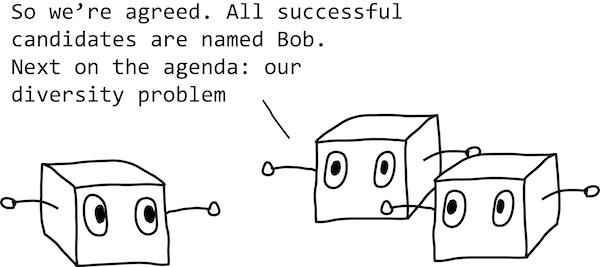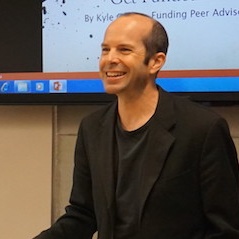Artificial Intelligence isn’t as smart as you think it is. It’s more like a simple calculator than an evil, all-knowing genius. Sure, some AI computers can kick your ass at chess, Go, or Jeopardy, but show them a sheep in a kitchen and they may be convinced it’s a cat. And don’t get me started on giraffes. AIs can tend to report their presence in the most unlikely places.
Welcome to Janelle Shane’s weird world of AI. Shane is an optics researcher in Colorado who became intrigued with AI after witnessing the bizarre results of AI-generated food recipes. AI suggested things like “chopping water into pieces” and “adding shredded bourbon.” She found the recipes hilarious, learned to generate her own, and shared them on her blog AIWeirdness.
Fast forward a few years and Shane has become a thought leader on AI, bringing much-needed humor to the science. I chatted with her on the phone how she got into the field, her new book You Look Like a Thing and I Love You, and the future of AI.
You research optics during the day and play with AI in your free time. How did you get into the field of AI?
When I was an undergraduate, I joined a group so we could use machine learning to solve problems with laser beams. But I found it was easier to solve the laser problems with an understanding of the physics than to program the AI to do it. Then several years later, I was in grad school, and somebody trained an algorithm text to create cookbook recipes. I found the results hilarious. I had never seen anything like it. I thought, “This is artificial intelligence? Why is it making mistakes?”
I decided to find out. But when I started four years ago, there were no web tools for generating text. I had to download and install code like torch and python. It was an exercise in sheer determination. But there was a feeling of triumph when I finally managed to generate results. Then I would be at my computer, laughing till tears rolled down my cheeks.
Tell me about your blog AI Weirdness?
I originally created my blog to post electron microscope pictures. If you look way back in the archives, you can find weird micro landscapes.
Then I started posting the AI results, mostly for own amusement so I could read them later. After about a year, I happened to check back and some people were reading the blog. There was one popular post about Pokemon names generated through AI. Someone had illustrated the characters.
Then a couple of my experiments got some press attention. I had the AI generate paint color names. Annalee Newitz of Ars Technica wrote an article on the results. They have been a fan from the get-go.

Your new book is You Look Like a Thing and I Love You. Who’s the audience? What’s the message?
The book is for anyone curious about AI. There’s no previous knowledge of AI necessary. I give you all the basics you need to understand it.
The book is supposed to be entertaining. I have cartoons on almost every page. Open to any random page and you can learn something. You don’t need to read straight through and it’s easy enough for children to understand—at the very least, they can look at the cartoons!
My other goal was to clear confusion about AI and what today’s AIs can do. Some people think machines can analyze a babysitter’s background to decide whether they’re trustworthy. But if you look at AI and understand the decision process, you understand it can be biased or incomplete. For example, Amazon experimented with AI for analyzing resumes to make hiring decisions. As a database, the researchers used all the previous decisions made by the Amazon hiring managers. From these human examples it learned to avoid hiring women, so the AI would screen for women’s names, women’s colleges, soccer teams, and eliminate those resumes from consideration.
Machine responses are only as good as their data set. Take giraffes as another example. An AI trained on examples of questions people asked and answered about photos learned that nobody ever asked a question like “How many giraffes are there?” when the answer was zero. So if you ask that AI how many giraffes are in a photo, they always give a nonzero number, even if there are no giraffes at all.
What do you see as the future of AI in the next few years?
The best uses of AI are going to be with human supervision to make people more effective. Humans are going to be editors and supervisors working with AI. AI will be used as a first draft tool but then humans will edit the results.
For example, AI is horrible with language’s nuances. It’s not going to get the little idioms or context. However, I know a translator and he uses AI for the first draft. Then he fixes it to get the nuances correct.
What’s next for you and AI?
It’s going to be a whirlwind month. My first TED talk comes out on Oct. 22. It’s a shorter version of the keynotes I’ve been giving. Then I have an Op-Ed piece in the New York Times on Nov. 4. Right after that, my book comes out on Nov. 5.
Kyle Crocco is the Chief Creative at BigSpeak Speakers Bureau, a graduate of UC Santa Barbara, and the lead singer of Duh Professors. He regularly publishes business book reviews and thought articles on Medium, Business 2 Community, and Born 2 Invest.
